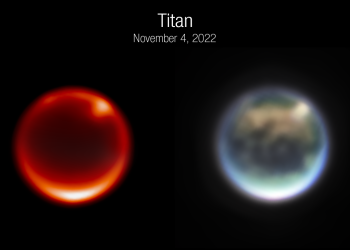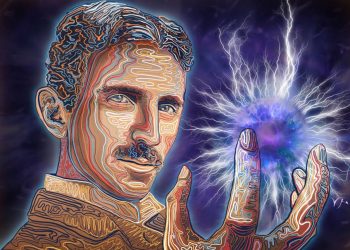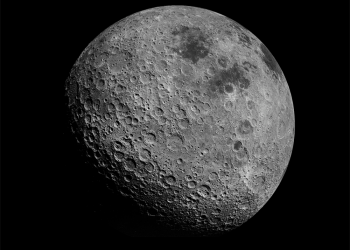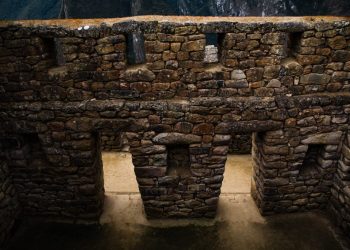Half a century ago, astronomers first hypothesized that there is a supermassive black hole at the center of our Galaxy. A lot of data speaks in support of this version; even the mass of this compact and non-radiating object has been calculated.
On May 12, 2022, the world finally faced the darkness in the center of the Milky Way in a breathtaking image taken by the Event Horizon Telescope. So what do we know about our supermassive black hole?
When did astronomers confirm the existence of the Sagittarius A* supermassive black hole?
In 2002, the group of Reinard Genzel and the group of Andrea Ghez, based on the results of 10 years of observing the movement of stars in the vicinity of the center of our Galaxy, found out that there is an object with a mass of about four million solar masses, in a region about 10 billion kilometers in size.
This was almost irrefutable proof of the presence of a supermassive black hole there: astrophysicists do not know of another way to fit such a mass into such a small volume, and even so that this object does not radiate anything.
Thanks to the Event Horizon Telescope collaboration, astronomers were able to refine the size of this region. Now we understand that the shadow of a black hole is about 60 million kilometers across – this is comparable to the size of the orbit of Mercury. If we replaced the Sun with a black hole SgrA *, then the Earth would move in orbit 2000 times faster, and the year would last 4.5 hours.
In addition, both measurements gave consistent mass values, which in turn are consistent with the predictions of the theory of relativity.
This makes it possible to refute many (but not all) alternative hypotheses about the nature of a compact object at the center of the Galaxy, such as a naked singularity, and some models of bosonic stars.
All these hypotheses do not fit into the observed picture.
The Event Horizon Telescope – What is it, and what does it do?
The Event Horizon Telescope (EHT) is more than 300 scientists and a dozen radio observatories united in one global network that works like one colossal radio telescope. As the name implies, its task is to study supermassive black holes in as much detail as possible, with such an angular resolution that you can see their event horizon.
Event Horizon Telescope Images To Date
EHT presented its first result in 2019 – the collaboration took a picture of the shadow of a black hole in the center of the M87 Galaxy. However, the data necessary to build this image was received in 2017, and it took astronomers two years to calibrate the data, develop models, and develop new imaging techniques.
The data for imaging the shadow of Sagittarius A*, the supermassive black hole at the center of the Milky Way, was collected by the collaboration at the same time in April 2017. Yet, it took even longer to complete – we only received it in May 2022.
What do we know about the black hole in M87?
The supermassive black hole that EHT demonstrated in 2019 is a giant, one of the most massive black holes known to us. Its mass is 6.5 billion more than the mass of the Sun.
Its home is the giant elliptical Galaxy Virgo A (Messier 87) at the center of the Virgo Supercluster, 55 million light-years from Earth. The black hole in M87 is surrounded by an accretion disk and emits relativistic jets – jets of charged particles moving at a speed close to the speed of light. The jets in M87 are clearly visible throughout the entire electromagnetic spectrum.
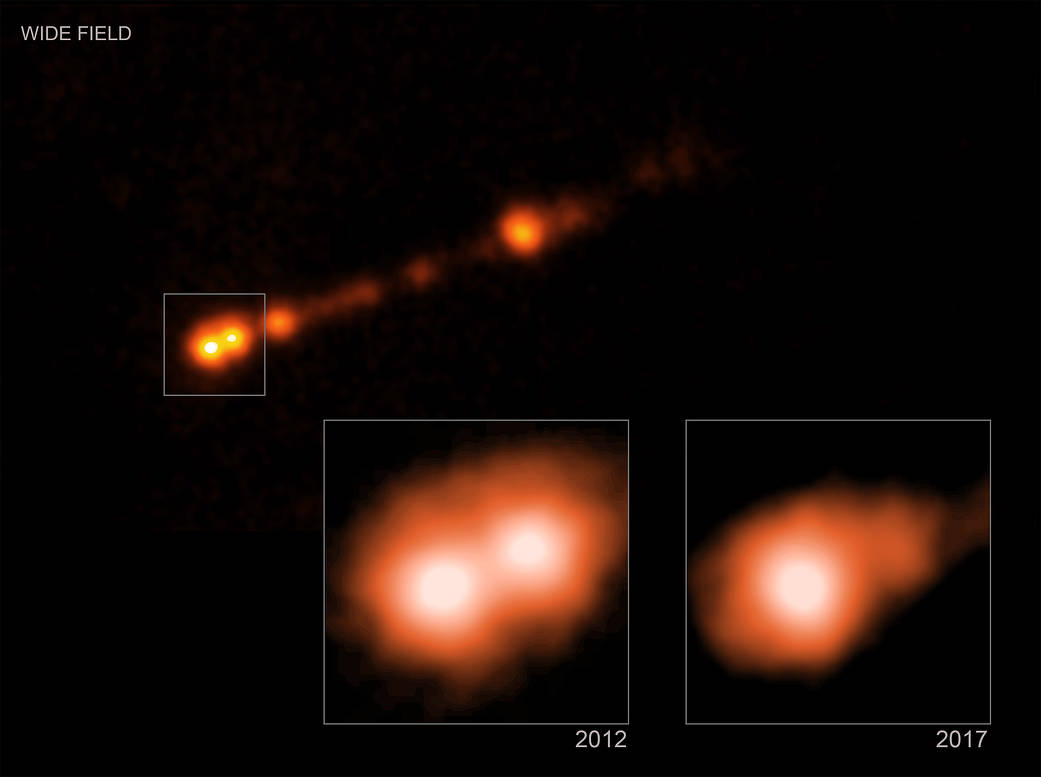
How is Sagittarius A* different?
Our black hole Sagittarius A* is much more ordinary, similar to most of the black holes we know about in the Universe. However, it is much closer, at a distance of 27 thousand light-years from us, and its mass is three orders of magnitude smaller than that of the black hole in M87 – about 4 million solar masses.
The accretion rate of matter on Sgr A* is also much lower, and there is no evidence that it emits jets. But it is the closest to us.
Back in the 1990s, astronomers were able to determine its mass accurately: astronomers studied the orbits of stars moving around Sagittarius A* and calculated the mass from the parameters of these orbits.
At the same time, the results of the two groups obtained independently at two different telescopes converged with reasonable accuracy.
The black hole at the center of M87 is about a thousand times heavier than Sgr A*but also a thousand times further away.
Since the size of a black hole’s event horizon is directly proportional to its mass, and the angular size in the sky is inversely proportional to its distance, the shadow images of both black holes should be about the same size. But getting a picture with Sagittarius A* turned out to be much more difficult.
Why did it take this long for the Sagittarius A* image to be completed?
It all begins with our location – the plane of the disk of the Milky Way. This means that astronomers have to look at its center through dense clouds of gas and dust that are in the path of radiation.
Passing through these clouds, the radiation is attenuated and the image becomes more blurred. Both absorption and radiation distortion have to be taken into account when constructing the final image.
These effects were theoretically predicted earlier, but for most other active galactic nuclei, they are small, and in practice, they are rarely taken into account. Therefore, the EHT collaboration had to develop methods to consider such distortions to obtain clear images eventually.
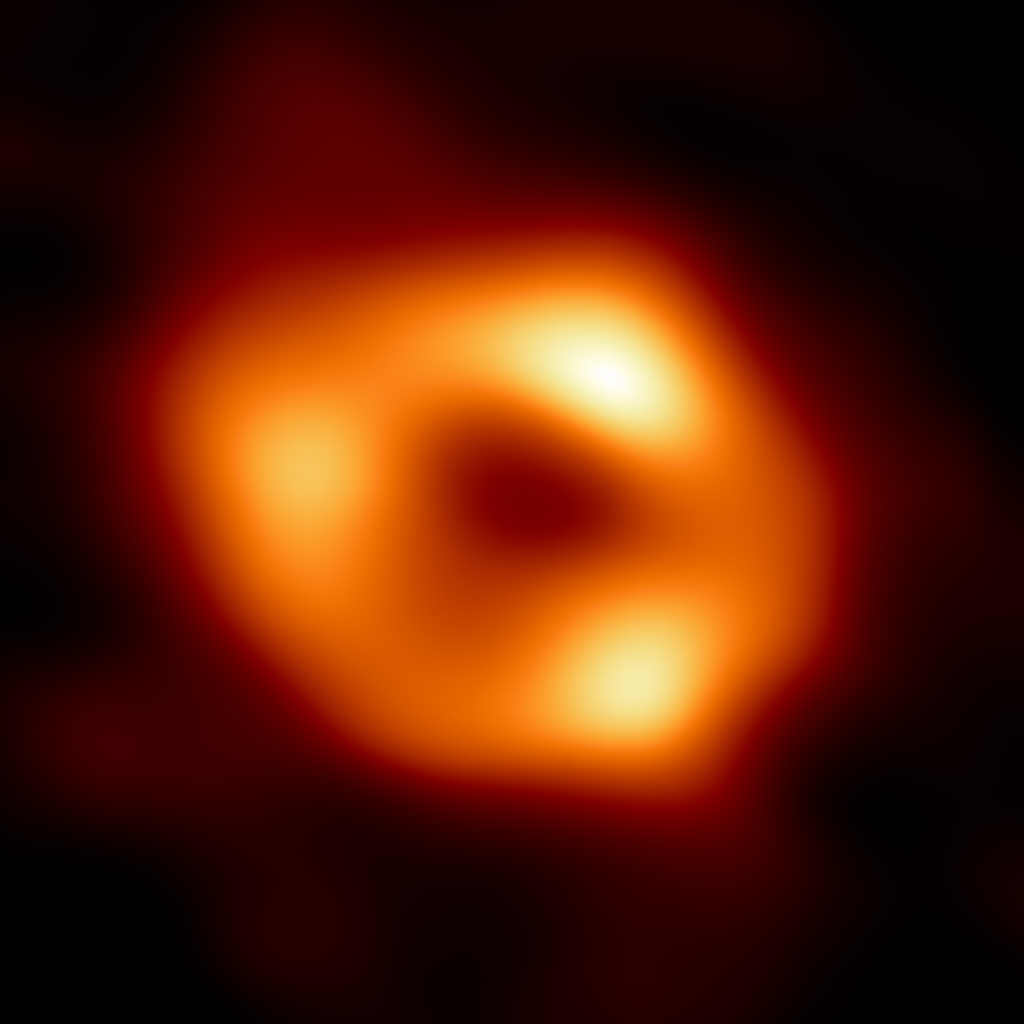
The size of the shadow of Sagittarius A* is about ten light minutes. In a few tens of minutes, the movement of plasma and gas changes the picture, and the telescope does not have time to get an image.
Usually, a session of observations of one object using the EHT lasts 10–12 hours, but even in one hour, the ring’s structure around Sagittarius A* can completely change.
So it turned out that the radio astronomers got a lot of pieces of the puzzle, but they all belonged to different photographs because while they received these pieces, the target changed.
It took five years to assemble them into a single image.
Scientists generated countless models before they were able to build the final image
The working process included creating a lot of models that were then compared to observational data. Finally, scientists had to figure out which models were most accurate with the obtained data. In the image below, you see the final four that were selected. From these four clusters, scientists built the final image we saw in May 2022.
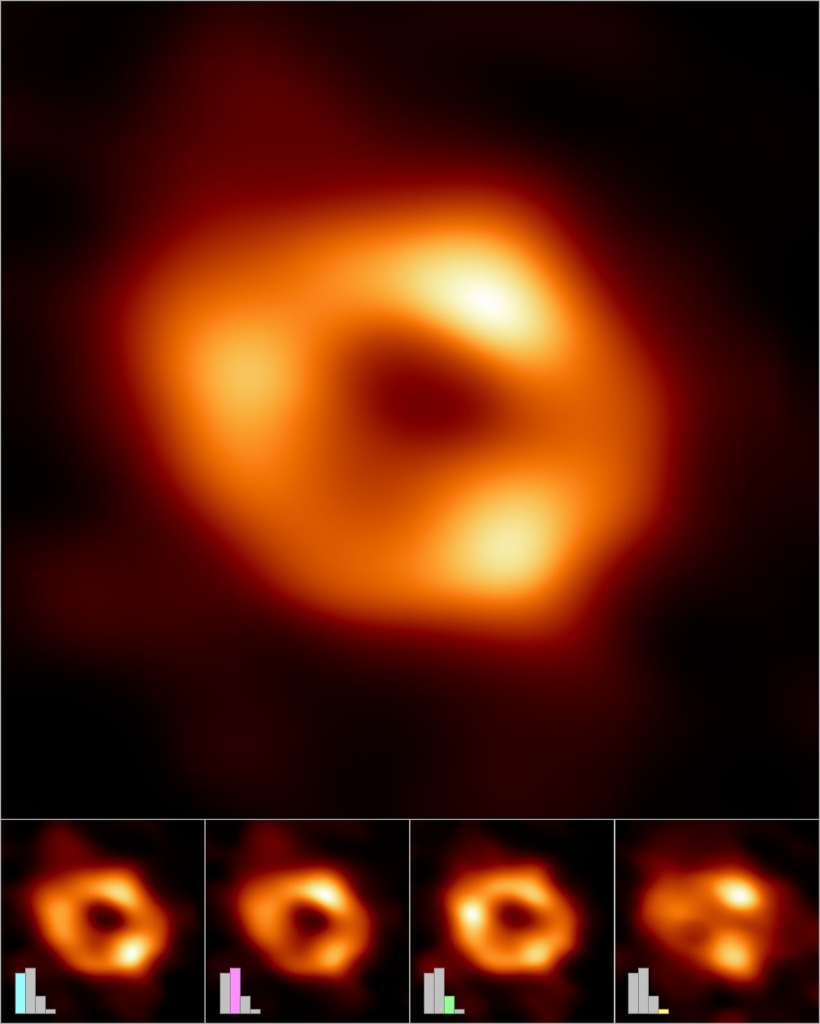
How many telescopes would the EHT need to get faster results?
If the EHT consisted of 100 telescopes, Sagittarius A* variability would not be a problem. Scientists could take high-quality images every 10 minutes and in one observation session make a whole movie about how a black hole lives and changes.
But the EHT had only eight telescopes in 2017 and had to use the Earth’s rotation to build a quality image. Thanks to him, the projection of the base of each pair of telescopes changes with time, so the number of different angular scales measured in one observation is sufficient for simple imaging, provided that this image does not change. As we know, this is not the case for SgrA*.
In future observations, by increasing the number of telescopes in the EHT, it will be possible to make a video of the behavior of matter around a black hole. This will allow not only to refine the parameters of the black hole itself but also to understand the physics of the accreting plasma better.
What can we expect from the EHT project in the future – more black hole images?
In April 2017, when the EHT received data from which images of the shadows of black holes in the Milky Way and M87 were collected, scientists used it to observe many other objects: the Centaurus A galaxy, blazars 3C 279, OJ 287. In addition, some other active galaxies have also been observed in 2021 and 2022. Therefore, it can be expected that the results of these observations will also be presented soon.
In addition, the Event Horizon Telescope itself is gradually growing. Since 2017, the EHT has added three new telescopes—in Greenland, Arizona, and France—and the sensitivity of all telescopes has improved by 40 percent. Scientists have already made the first observations at a frequency of 345 gigahertz.
Compared to 2017, the telescope can now observe objects half the size and 2.5 times fainter. In addition, radiation at the new 345 GHz frequency is less susceptible to scattering than at the previous 230 GHz, so the following images will be clearer.
For example, the 2021-2022 observations are expected to allow scientists to see in detail the region from which the relativistic black hole jet emanates at the center of the M87 Galaxy.
Can we expect better images of Sagittarius A* soon?
The plans of the collaboration, obviously, are to build an image of SgrA * in linearly polarized light and detect the circular polarization of the black hole in M87.
This can be done with the data already available, so the EHT scientists will look into this soon. Black Holes cannot have their own magnetic field, but we can see their formation in the accretion disk and how it participates in launching and accelerating the relativistic ejection.
The observation of polarized radiation is the key that will open the door to measuring magnetic fields in the immediate vicinity of black holes.
By measuring them, we can definitively disprove all alternative models of black holes and, finally, understand how they launch relativistic jets.
Join the discussion and participate in awesome giveaways in our mobile Telegram group. Join Curiosmos on Telegram Today. t.me/Curiosmos






